Famous Composers
More than Mozart
The clarinet - like any other instrument - comes alive when you play it. In general what is played on clarinets is composed music - only a small part of what people play is improvised like in Jazz or folk music like Klezmer. Some compositions are well known milestones for clarinet music and therefore known even to a wide public like Mozart's and Weber's clarinet concertos, the beginning of Gershwin's Rhapsody in Blue or "the cat" movement in Prokofiews "Peter and the Wolf".
Below you find a list of the most famous or most important composers from a clarinet player's perspective. These are no full CVs, just micro-summaries. There may be links showing more detailed information; in any case you can use a search engine and usually find as much text as you like.
There are some composers you might expect but won't find here for good reasons, like Johann Sebastian Bach or Beethoven. In Bach's days there were no clarinets, of course there are arrangements of Toccata and Fuge in D minor for clarinet choir, but that is not what this page is about. And Beethoven is only shortly mentioned, because he used the clarinet in his works, but not in a very prominent role.
The priority applied here is my own subjective point of view, and I got a lot of mails asking to add others. I started the web site in German for German readers, German speaking composers may therefore appear while South Americans or Asians may be overlooked. I did add some now and then but it is not possible to properly judge and keep up with it. Unfortunately, unlike for clarinet players, there is no good list for composers for clarinet in Wikipedia I could refer to. If you find anything like it, please do send me a link!
before the classical period (Baroque):
Georg Friedrich Händel (1685 - 1759),
Carl Philipp Emanuel Bach (1714 - 1788)


Until late Baroque, that is until about 1750, the clarinet could not be seriously used on the one hand, and on the other there were no clarinet players except for a few travelling virtuosos. So most well known composers did not write for clarinet. But already Händel (aka George Frederic Handel to the British) and C.P.E. Bach (son of Johann Sebastian) wrote smaller parts for the new instrument.
Johann Stamitz (1717-1757)
Carl Philipp Stamitz (1745-1801) - son of Johann

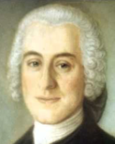
Johann Stamitz not only was an excellent clarinet player himself, but at the same time the conductor of the Mannheim royal orchestra ("Mannheimer Hofkapelle") and wrote music for that ensemble. The Mannheimers were not necessarily the very first orchestra that had permanent clarinet players in their wood wind section (starting 1757), but they added considerably to the clarinet's popularity. This was mainly due to the quality of the orchestra itself and its concert tours going all over Europe. Stamitz and later his son Carl Philipp wrote a number of pleasant solo concertos that influenced all later composers, including, off course, Mozart. The letter he wrote to his father 1778, see below, refers to one of the Mannheimer's concerts Wolfgang Amadeus had visited.
Classical period:
Wolfgang Amadeus Mozart (1756 - 1791)
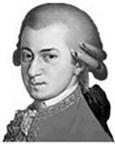
The world's probably most famous composer has written the best known classical piece of music for clarinet, too: The concerto in A - its slow second movement is even better known to some people as film music from "out of Afrika". Mozart lived in a time when the clarinet still was new and therefore interesting on the one hand, but technically advanced that these difficult pieces could already be mastered. In the year 1778 Mozart wrote to his father: "if only we had clarinets! You can't imagine what a grand effect a symphony with flutes, oboes and clarinets make!" From 1780 on the clarinet was Mozart's favourite instrument and later especially the bassett horn and he became a close friend with the infamous clarinet player Anton Stadler. For him he wrote the most famous of clarinet concertos.
Jan Václav Knezek (1745 - 1806)
The Bohemian composer (Bohemia was a kingdom - part of Austrian empire - today the western part of the Czech republic, with Prague its capital) has written clarinet solo concerts that can be heard on radio frequently, they have pleasant tunes and show off the strengths of the instruments, especially in his concerto for two clarinets. Knezek worked in the court's orchestra of Thurn und Taxis as an employed clarinet player and composer. It was a good job, he was a free man and earned extra premiums for compositions - much in contrast to his friend, the well known Bohemian french horn player Stich, alias "Punto" (Punto is Italian for the German word Stich (=sting)). Punto was a musical slave (!) in the same court. Together they fled to Germany where slavery was abolished.
František Kramár (1759 - 1831) [alias Franz Krommer]
The Bohemian composer has written several nice solo concertos, that are played frequently on classical radio stations. They are artistic, but pleasant to hear. Kramár's style is typical for his time, which was the time of travelling clarinet virtuosos. They ordered impressive works by famous composers quite often because the audience wanted to hear something new and spectacular.
Romantic period:
Louis Spohr (1784 - 1859)
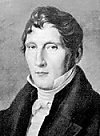
Today Louis Spohr is not as well known as Mozart or Weber, but in his day he was the most popular. He started to write concertos for his friend, the clarinet player Johann Simon Hermstedt (1778-1846). Hermstedt was a technically brilliant player, and all Spohr's four concertos are full of technical difficulties, over all the three clarinet's registers. In the beginning Spohr did not exactly know what was possible on the clarinet and did not make it easy for Hermstedt, who in return improved the mechanics of his instrument to be able to play the difficult compositions. This gave the technical development of the clarinet quite a push.
Karl M. v. Weber (1786 - 1826)
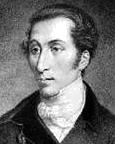
Next to Mozart, Weber's compositions for clarinet are the most famous and most frequently played ones. He wrote them for his friend, the clarinet player Heinrich Baermann. Weber knew strengths and weaknesses of the instrument much better than Spohr - and then Baermann was not so much a technical player as Hermstedt. This makes Weber's pieces so satisfying. After one successful concerto he wrote to a friend: "The whole orchestra went crazy and demands concertos from me. They are running wild, writing to the King (Ludwig of Bavaria) and the musical board with their demands..."
Johannes Brahms (1833 - 1897)

Brahms already had stopped to compose, but very much like Mozart met Stadler and wrote for him, and Weber wrote for Baermann, Brahms met Mr. Mühlfeld (who was given the nickname "Miss Clarinet") and wrote the clarinet trio op. 114, the quintett op. 115 (1891) and the two clarinet sonatas op. 120 in f major and Eb minor (1894). That was roughly a hundred years after Mozart, and the instrument was advanced in technique and sound, which reflects in the result.
Modern period:
George Gershwin (1898 - 1937)

George Gershwin was one of the first writing symphonic jazz; that is, using jazz elements in a piece that is composed for symphonic orchestra. He thereby created a tradition within which many symphonic composers who write for musical and movies continued until today like Aaron Copland, Leonard Bernstein and John Williams.
One can certainly discuss in how far George Gershwin should be put into the "modern" period or rather into the "romantic" composition tradition. Seriously looking at it you could place most of today's film- and musical composers into the romantic.
In "Rhapsody in Blue" - it is actually rather a piano concerto - Gershwin gave the clarinet one prominent move in the first line, the famous glissando. After that the piano sets in, and the clarinet becomes a normal orchestral player in the background. And this is what it looks like:
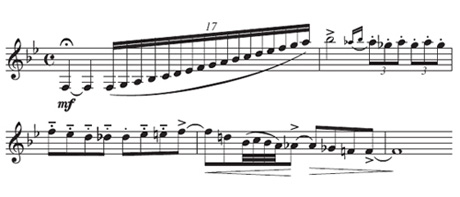
Other transcriptions note a trill on the F in the beginning and a "glissando" on the upright movement. But that is really unnecessary because everybody knows how it should sound :-). If you wonder how it is done, this  video gives a good explanation.
video gives a good explanation.
Sergej Prokofiews (1891 - 1953)

Russian modern music - that is what Prokofiew stands for. He had his own answer to the challenge of modern music - empty concert halls because of the lack of popularity: He was convinced that the modern composer *must* be popular, or else the audience would rather listen to (in his view) primitive pop music. So he wrote music that - even today - easily fills the largest concert halls. "Петя и волк" (="Peter and the Wolf"), being in style and design really modern, introduce the characters of the piece in such an ingenious way that within a couple of minutes you can hear the world's five most popular instrumental solos of all times.
This includes the leitmotiv or guiding theme of "the cat", the best known clarinet motive of them all. In about eight seconds this is one rather harmless sounding tune (only when played well, but just try to play it yourself...) Prokofiew demonstrates the ability and characteristics of the clarinet at its best.
Bela Bartok (1881 - 1945)
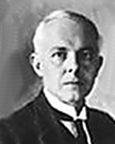
This composer has his roots in Hungarian folk music, which is a central asian music. Hungarian should not be mixed up with what most people think of, which is Johannes Brahms' Hungarian dances - those are not native Hungarian, but rather gipsy tunes. Bartok's pieces have unusual rhythmic concepts. He also wrote some pieces for clarinet that Benny Goodman ordered, and this player's popularity already gave them some public interest.
Francis Poulenc (1899 - 1963)
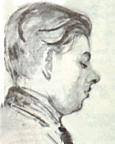
French modern music - Poulenc was a member of the group of the Six in Paris. He had a radical approach to modern music, but had more traditional periods, too. Today some of his works are standard pieces for the clarinet student - that is when you are somewhat advanced. Nevertheless this will hardly ever become popular music and will hardly ever fill a concert hall. So you won't hear much of him on commercial radio stations in prime time...
Darius Milhaud (1892 - 1974)

Being one of the French modern composers Milhaud is not widely known outside of the French speaking world. That is a pity since he wrote over 450 pieces, some in really popular style, especially the "Scaramouche" - Latin American dances - he composed for Benny Goodman. One of those dances, the "Brazileira", is played on radio from time to time. You can hear that Milhaud did work for France's diplomatic service in South America for some time. Despite being modern, Milhaud was a pleasant harmonist, who was fascinated by rhythm.
Aaron Copland (1900 - 1990)
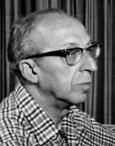
Aaron Copland was about the same age and had a similar background as George Gershwin, Leonard Bernstein, Dariusz Milhaud and Benny Goodman. He studied at Rubin Goldmark's in New York and later - as the musicians mentioned above - in Paris with Nadia Boulanger, who had an immense influence on many (mostly both, talented and rich) young US-American music students.
Copland's works as early composer - and then again as very late composer - were uncompromising modern, partly 12-tonal (and as result they were not very successful from a commercial point of view).
But during the phase in between he wrote in a more popular and even jazz-like style (somewhat like Gershwin - e.g. the "Fanfare for the Common Man" and some film music). He also composed his clarinet concerto, being the best known "classical" piece of clarinet music composed inside the USA - a production ordered by Benny Goodman, who this way helped some modern composers to earn their living and made their works popular by playing it in his concerts. It was rather normal that Goodman's concerts were sold out, some even recorded for radio or the record industry. He played popular music including swing (which he was best known for) but also introduced some more modern pieces in his programmes as well.
Others (based on publications by music publisher Schott)
Operas
Richard Wagner (1813-1883)
In his famous operas he wrote solo parts for clarinets and bass clarinet (like in Tristan and Isolde)
Guiseppe Verdi (1813-1901)
Verdi begins the third act of his opera "la forza dell destino" (the might of destiny) with a long solo part for clarinet.
Richard Strauss (1864-1953)
Some of his modern operas use the bassett horn, like the rose chevalier. In his opera "Elektra" the score asks for 8 clarinets: two B-flat, two A, an E-flat, a bass clarinet and two bassett horns.
Rossini and Puccini
Very nice and prominent parts for clarinets in "il barbiere de Sevilla" and in "Tosca".
Gerald Finzi (1901-1956)
An English composer who has written an attractive, pastoral clarinet concerto.
Further clarinet appearances
Ludwig van Beethoven (1770-1827) - Bird calls in the 6th symphony ("Pastorale)
Hector Berlioz (1803-1869) - Symphony fantastique - Walpurgis night - E-flat solo
Peter Iljitsch Tschaikowsky (1840-1893) - 5th and 6th Symphony - nice soli
Franz Schubert (1797-1828) - Symphonies with prominent clarinet solo
Felix Mendelssohn Bartholdy - used clarinets in lots of symphonies
Antonin Dvořák, Gustav Mahler, Dmitri Schostakovitsch: intense use of clarinets
To be mentioned
Robert Schumann: Fantasiestücke, Märchenerzählungen (mit Viola)
Niels W. Gade: Fantasiestücke
Max Reger: Sonaten
Claude Debussy: Premier Rhapsodie
Alban Berg: Vier Stücke op. 5
Camille Saint-Saëns: Sonate
Paul Hindemith: Sonate
Luise Farrenc: Trio op. 44 (mit Violoncello)
Arnold Schönberg: Pierrot lunaire
Karlheinz Stockhausen: Der Harlekin